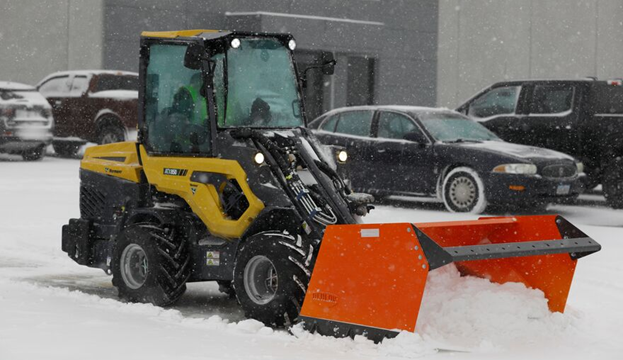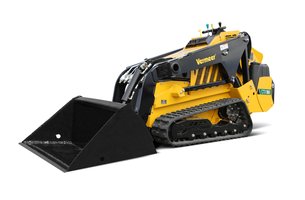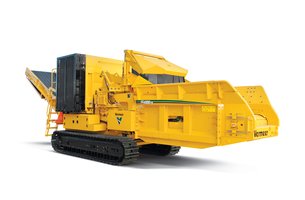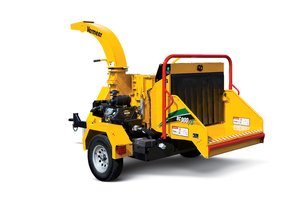What Maintenance Does My Equipment Need Over Cold Months?
January 18, 2024

The winter months can impact the condition of your machinery. It’s important to keep equipment strong for any task at hand which involves conducting regular maintenance and servicing when required. We’ve listed some key tips for the safety and integrity of your equipment with regards to storing, using, and making the most of your equipment in the cold winter months...
Storing Your Equipment Over Winter Safely
If you find you're not using your machine over the colder periods, its still recommended few actions are taken to ensure your machine does not corrode or lose ability over the time it's stored. Some key things to consider include:
- Keeping Rust Free – Winter conditions can impact the integrity of your machine with rust and oxidation. A common susceptible area for extensive corrosion would be the undercarriage as this is most exposed to salt and corrosive liquids. Salt applied in winter can damage your equipment’s body without appropriate preparation and care. When operating machinery in the winter it’s best practice to apply rust-resistant coating and grease on exposed metal parts to prevent ice buildup on joints.
- Preventing Jamming & Impairment – Frozen mud and ice can cause long term damage creating further wear and tear on the machine throughout the winter months. Not only could this cause issue with oxidation and dirt but at low temperatures with ice the functionality of the machine may be impaired due to locked or jammed tracks. It’s good practice to clean machines with washers or other tools after workdays to prevent these issues happening.
Using Your Machine In Cold Conditions
If you're actively using your machinery over the cold winter months, you must ensure steps are taken to be sure your machine is ready for the job at hand. Few things to consider when getting your machine ready for a task include:
- Starter Fluid – This is a fluid designed to be more flammable than fuel to help the engine start up in temperatures difficult for the machine. Often made to help machines start from a temperature of -50 degrees Celsius, this fluid should only be used for starting your equipment up. Fluid would be applied to the engine intake, carburetor bore, or the spark plug hole to get fuel to the combustion cylinders quickly. Note, it is important to familiarize yourself with your engine before opting for starter fluid use as this action may cause permanent damage.
- Fuel Usage - Consider switching fuel (D2 to D1) to prevent winter freezing/clogging – One factor that may not be first considered when encountering equipment issues in the winter is the use of D2 fuel rather than D1. Although most machines are operated using diesel 2 (D2) it would be an effective choice to switch to diesel 1 (D1) for lower viscosity. This would allow for better efficiency in lower temperatures (whereas D2 provides better performance in summer/hotter temperatures).
- Defrost and clear blind spots – When temperatures start to fall below zero it’s common for ice and snow to build up around the machine. Although it’s important to follow steps to ensure the machine is functional, its key to clear all blind spots and obstructions from the cab to allow for clear visibility during operation. Snow can outright block visibility with ice obscuring vision with frozen layers over cab glass. Using defrosting spray or hand tools can help remove these obstacles from the cab windows, you can also prevent build up by using pre-application spray if you know the next day or days will be snowy and icy on the jobsite.
- Tires deflation – During cold weather conditions tires can be a common factor for operators to keep track of. It is key to check your tire levels as in temperatures as under 10 degrees Celsius the gas stored within your equipment tires would drop approximately 10-20% psi. When pressure drops under low temperatures this can drastically impact functionality, lift ability etc. Note: Nitrogen filled tires lose less inflation in cold weather as nitrogen has a lower density than oxygen.
Keeping Check on Peripherals & Accessories
Its important to also keep check on additional factors beyond the engine and hydraulics as many equipment liquids and accessories can lose effectiveness in cold weather conditions. See below some suggestions for key areas to check when using your equipment after winter storage or in colder months:
- Block heaters – Often used in cars to combat the Canadian winter cold, block heaters can be installed to warm the engine eliminating overnight idle and keeps equipment at optimal temperatures for operation.
- Coolant – Over cold months the fluids within your equipment are prone to freezing and changing. A common issue is the coolant and hydraulic fluids freeze preventing use of the machine. There are several ways to combat this problem with block heaters, de-icers, and liquid antifreeze. As to which of these options is best for you depends on the needs of your machine and the demands of the tasks at hand.
- Battery Life – Often forgotten but very important is the life of the battery installed in your machine. Although each machine is different with the impact being varied depending on if the battery is Li-ion NiCd, NiMH or lead acid. Within cold months it is easy for the battery to lose a percentage of its capacity under 5 degrees Celsius (note: see below how different batteries survive in varied ranges of temperature exposure). This is also a factor for summer months as high heat can cause battery complications in the same way. Some machines have smart indicators to show the battery level or charge which help keep equipment in good standing for power.
| Battery Type | Charge Temprature | Discharge Temperature |
|---|---|---|
| Li-ion Based | 0°C to 45°C / (32°F to 113°F) | –20°C to 60°C / (–4°F to 140°F) |
| NiCd + NiMH | 0°C to 45°C / (32°F to 113°F) | –20°C to 65°C / (–4°F to 149°F) |
| Lead Acid | –20°C to 50°C / (–4°F to 122°F) | –20°C to 50°C / (–4°F to 122°F) |
For more information as to how to keep your equipment in good health year round, check out our other blogs using the button below. Alternatively, contact us to find out how we can help winterize your equipment for the cold Canadian months.



